By: Patrick W. Zimmerman
Greetings, fellow denizen of the InterWebs. Willkommen to part 3 of the Beer Gazetteer, the project dedicated to aiding one and all in the noble Quest for Better Beer.
If No 2: Where should the beer nerds move? was all about celebrating the best places to take drunken laps in pools filled with the freshest, most tart sour ales, this article is about epic failure. Disaster. Cities so embarrassingly bereft of quality quaffing that they constitute a national gastronomic shame on a par with fish sticks and Chicken McNuggets. What metro areas have such a dearth of delicious nectar that you can hear their people wailing in agony from space? So desperate in that blighted place that they reach for the last refuge of the sober: Bud Light? Sure, if you’re dying of thirst (or a dead broke college student, which is pretty much the same thing), you’ll drink Natty Ice; but it would take a fairly high level of desperation.
The Question
Which large American cities have the worst concentration of great breweries? And how can you avoid them?
The Short-Short Version
With the (notable) exception of Columbus, OH, the Rust Belt looks pretty bad. Cleveland, Pittsburgh, Indy, and Detroit are all in the bottom 10.
The Southwest, once you get past California, is also pretty barren, though (in that case), the relatively low density of the population outside the major cities and the distances between them clearly hurts Phoenix, Dallas, and San Antonio (though another Texan city, Houston, bucks the trend).
The one factor that seems to stick out in the bottom half of the table is population size. While smaller cities aren’t necessarily beer deserts (San Diego, Columbus, Tampa, Sacramento), with the notable exception of Dallas, all of the cities in the bottom half of the table are outside of the top 10 most populous metro areas. It would make sense that fewer people would mean fewer drinkers and (thus) a smaller market for any potential craft breweries.
Dallas, what’s your excuse?
The dashboard
#30 – Dallas
Basic Booze Index of -180.9
Woof. Dallas – Fort Worth gets hammered because, in spite of its size (7th largest Combined Statistical Area in the US), it only has 24 qualifying breweries within 100 miles, only a single solitary one of which meets the superlative bar (this will be a theme down among the dregs of the Beer Table). That adds up to a large metro area that’s almost a full standard deviation below average across both the quality and quantity measures, which equals the coveted last place in our rankings of the Top 30 US metro areas.
Congratulations, I guess.
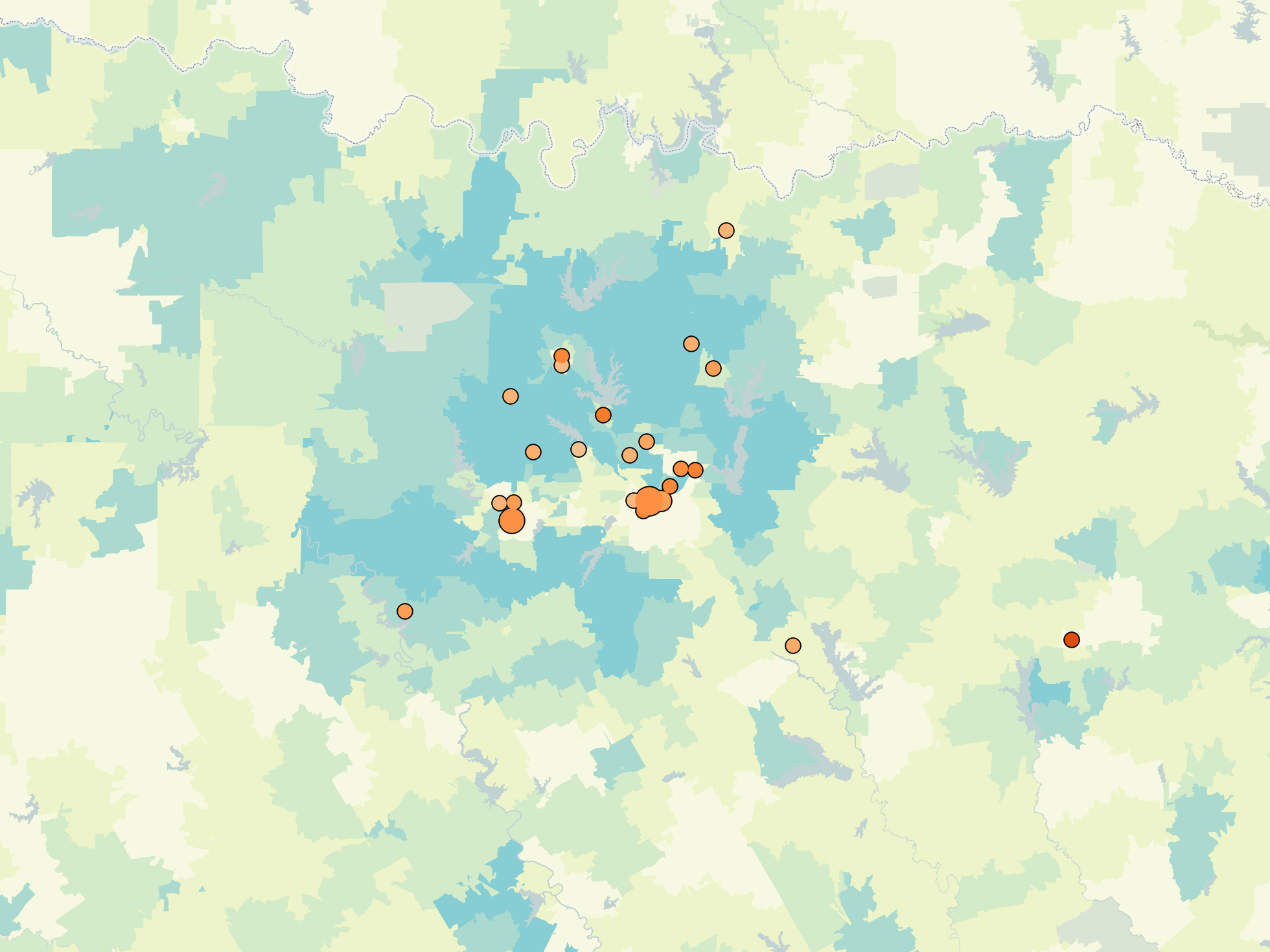
Click here for interactive dashboard
#29 – Pittsburgh
Basic Booze Index of -171.3
Iron City (which, shockingly, did not qualify for the dataset) and Ben Roethlisberger aren’t the only sources of shame on the banks of the Allegheny. Welcome to Pennsylvania Purgatory.
While the Burgh has many things going for it, such as affordable housing, good schools, and the brilliant idea to put fresh-cut fries on everything, including inside a giant sandwich, the local beverage options leave much to be desired, kind of like the traffic customs. 36 breweries in the area, only 1 superlative brewery, and a pretty abysmal quality z-score (-1.1).
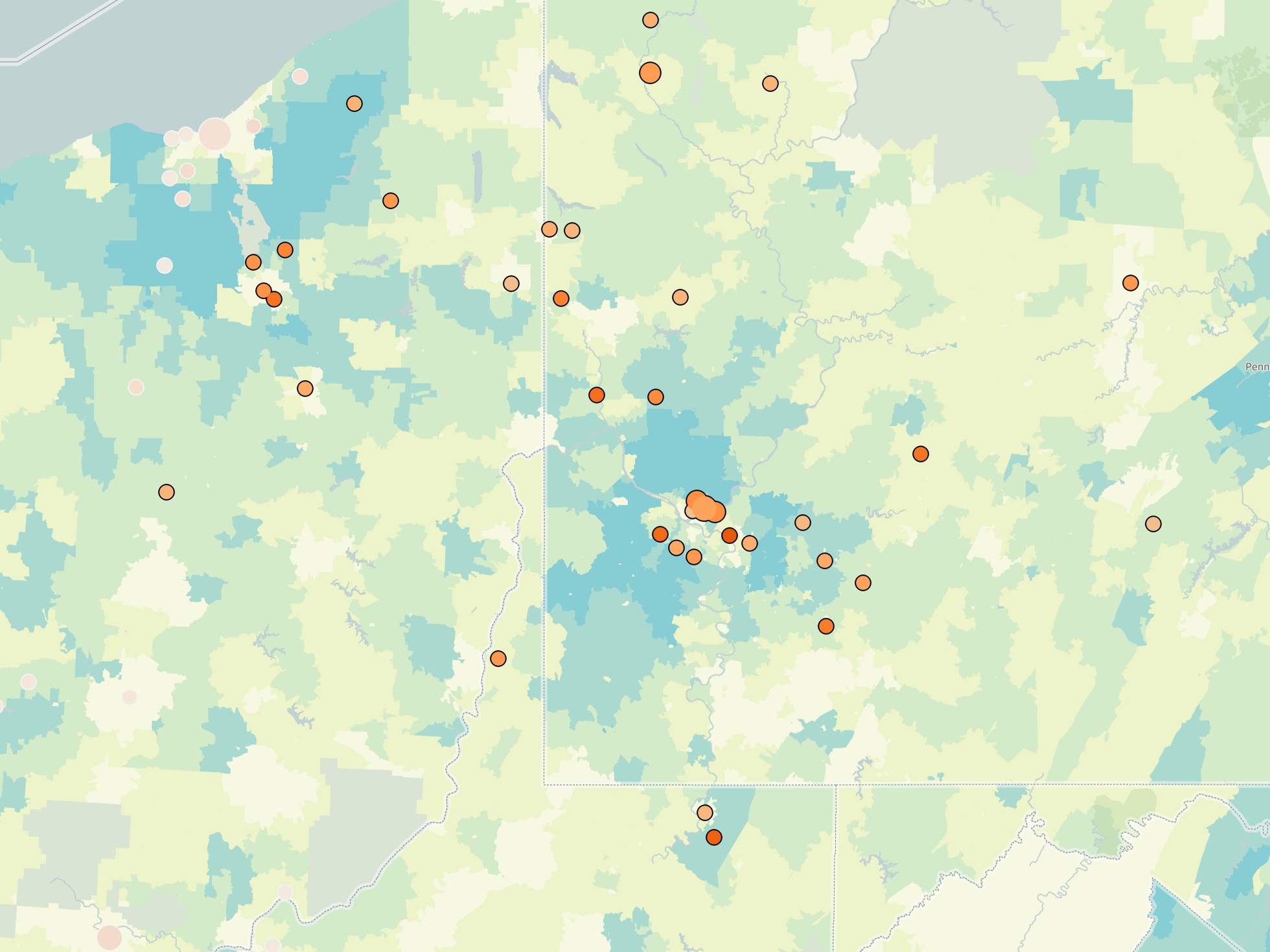
Click here for interactive dashboard
#28 – Cleveland
Basic Booze Index of -169.3
King James and one championship don’t change the sad truth that, yes, God still hates Cleveland.
Considering all of the good breweries in Ohio and nearby Michigan and Indiana, this one came as a bit of a surprise. While Cleveland seems to be surrounded by some decent breweries, they all apparently keep their distance from the burning Cuyahoga. The story is very similar to Pittsburgh’s (in beer, as in many other things, the rival cities are linked): a middling number of breweries within 100 miles, a solitary 4+ scorer, and a way below average quality z-score (-1.2).

Click here for interactive dashboard
#27 – Phoenix
Basic Booze Index of -152.1
Apparently, retirees who go to Arizona (in contrast with those who go to Florida, apparently) hate good beer. Within our 100 mile radius, the 17(!!) breweries that made the 3.5/5 average rating cutoff meant Phoenix rated terribly on both our quality and quantity scales (-1.1 quantity z-score, -0.5 adjusted quality z-score). Indeed, the only argument that can be made in favor of Phoenix as a beer hub is that it’s off-the-scale cheap (-2.7 adjusted cost z-score).
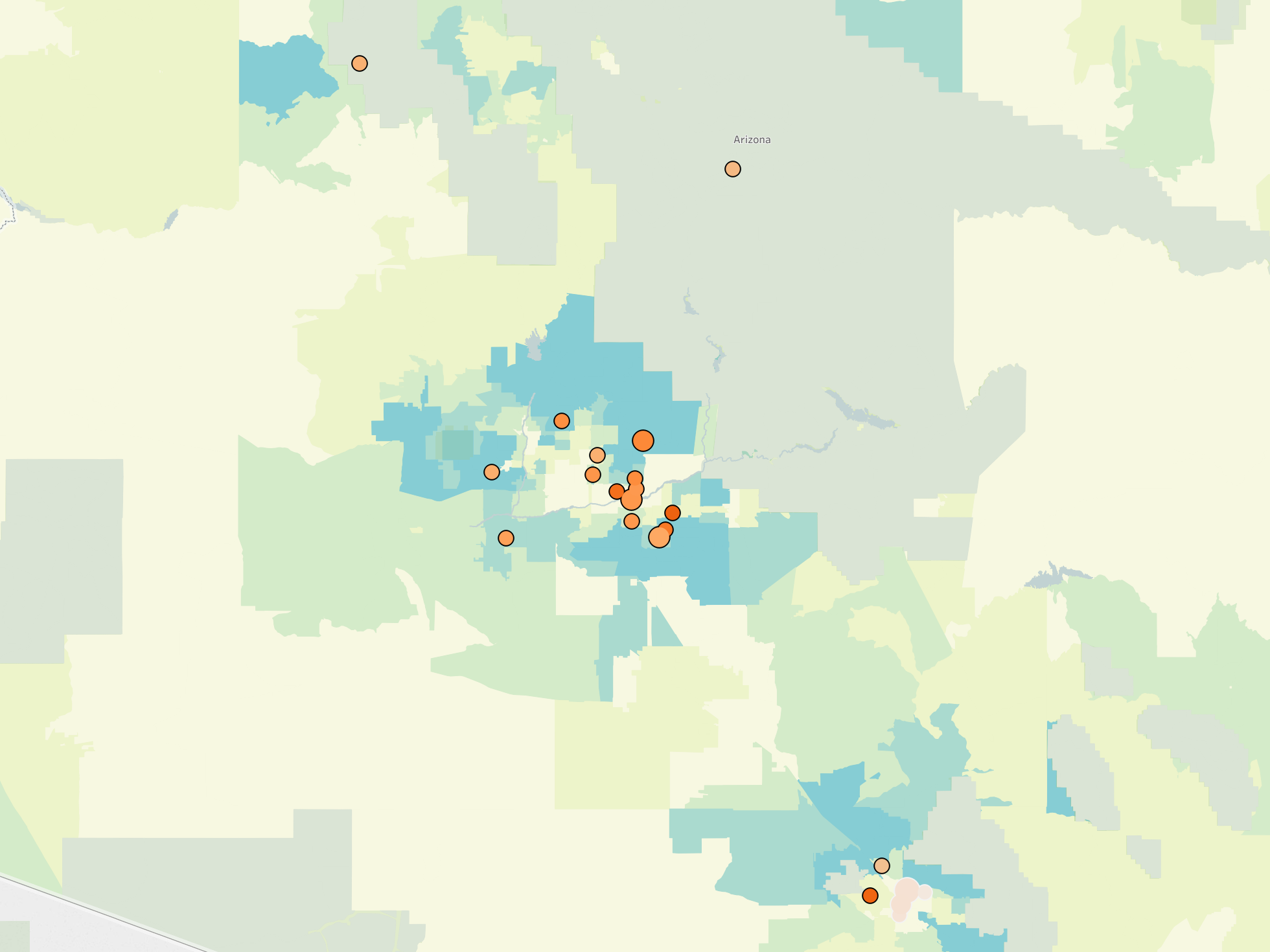
Click here for interactive dashboard
#26 – Twin Cities
Basic Booze Index of -148.7
While Minny has a fair number of breweries nearby (55), volume doesn’t make up for a very low average rating and only one superlative brewery. On the plus side, there will be plenty of beer for ice fishing. It won’t be great, but there’ll be plenty of it. And it’ll be cold. Surprisingly, it’ll also be about the most expensive in the dataset (+1.6 cost z-score).
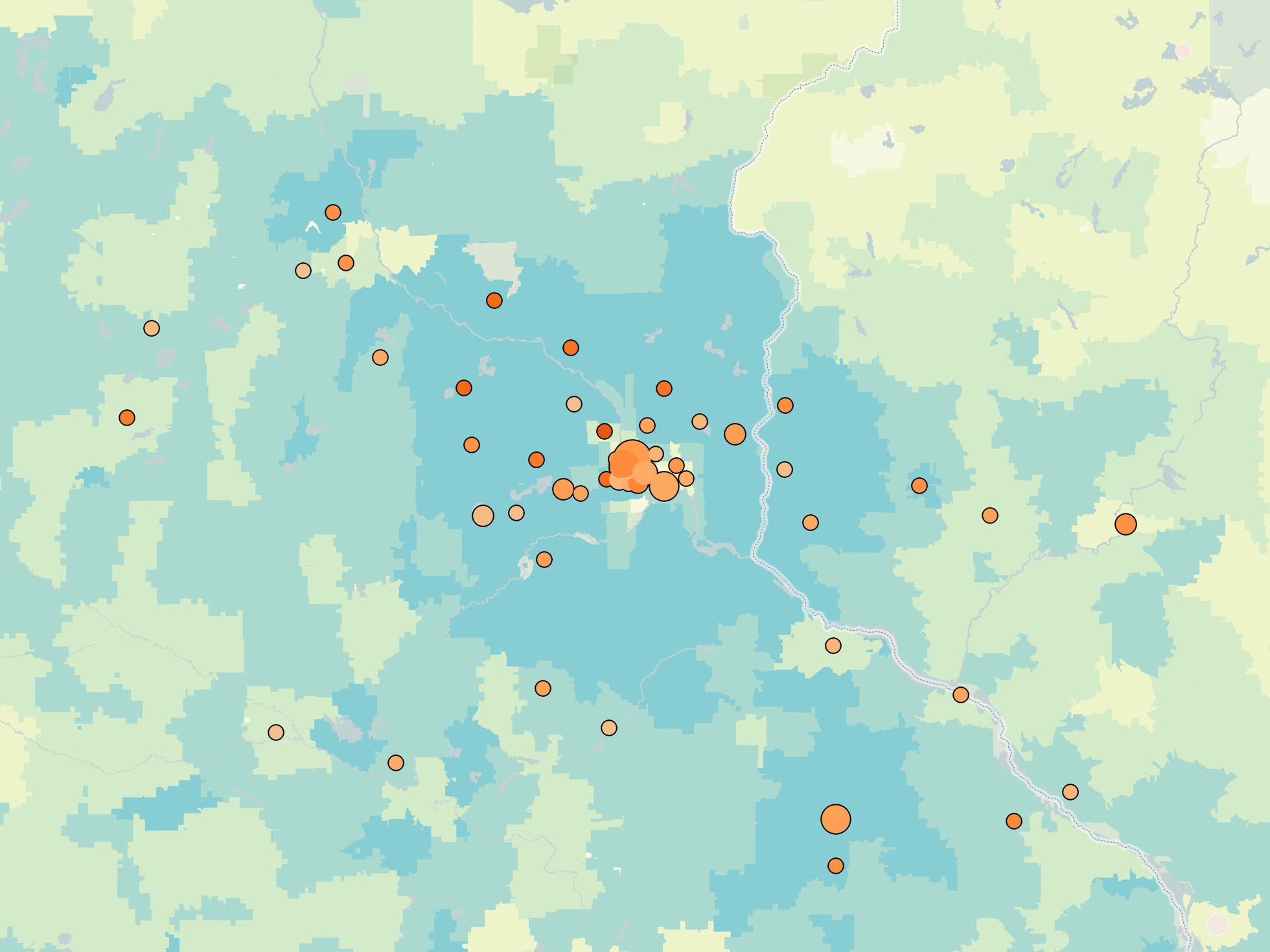
Click here for interactive dashboard
The List
Once again, in table form, with both nitty and gritty.
| Combined Statistical Area | Basic Booze Index | Adj. Booze Index | # breweries | Superlative breweries (≥4/5) | population rank | z-score quantity | adj. z-score quality | adj. z-score cost |
|---|---|---|---|---|---|---|---|---|
| Dallas | -180.9 | -75.9 | 24 | 1 | 7 | -0.9 | -0.9 | +0.2 |
| Pittsburgh | -171.3 | -79.0 | 36 | 1 | 23 | -0.6 | -1.1 | +0.5 |
| Cleveland | -169.3 | -70.6 | 40 | 1 | 16 | -0.5 | -1.2 | +0.1 |
| Phoenix | -152.1 | -7.2 | 17 | 1 | 14 | -1.1 | -0.5 | -2.7 |
| Minneapolis-St. Paul | -148.7 | -92.2 | 55 | 1 | 15 | -0.1 | -1.4 | +1.6 |
Methodological Minutiae
Detailed at the end of article #2 of this series.
What next?
The possibilities are legion, for they are many. There are many more directions this could be taken.
Some of the ideas that jump to mind:
- Correlating climate to beer quality (or density)
- How much does beer cluster in more prosperous areas, and what explains the exceptions (Hellloooo Asheville, NC)?
- Beer styles visualized. Yes, the Pacific Northwest likes their hoppy IPAs. What about some of the other (newly identified) beer Meccas? Is there an Eastern Seaboard style?
- What’s with Florida beer being so good? Why did no one tell us about this? Is it a big secret, or is the voting population there biased by all that time on the beach?
Have at it! Feel free to grab one of these topics, and best of luck!
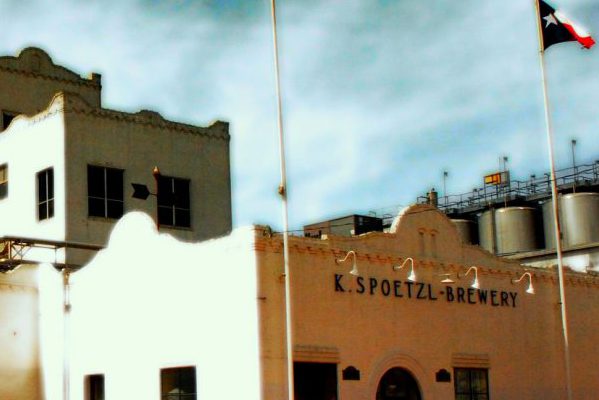
No Comments on "Beer Gazetteer: The loneliest, least beertastic metro areas in the US"